But if you ask many Imagineering insiders, one attraction stands among the pantheon of tone-deaf “upgrades.” An attraction with crude jokes, regrettable humor, and dated 90s style already spells disaster.
Now imagine that these unfortunate ingredients were forced into a beloved classic dating back to Walt himself – one of the few Walt Disney World attractions to bear his direct influence. It may sound unlikely, but just ask those who experienced The Enchanted Tiki Room: Under New Management, the too-long-lived overlay of a timeless classic. Why did this happen? How? Today, we’ll find out. But of course, there’s just one place to start.
And before we head off, remember that you can unlock rare concept art and audio streams in this story, access over 100 Extra Features, and recieve an annual Membership card and postcard art set in the mail by supporting this clickbait-free, in-depth, ad-free theme park storytelling site for as little as $2 / month! Become a Park Lore Member to join the story! Until then, let’s start at the beginning…
The beginning
The story of Imagineering’s bird-brained disaster begins a continent away from the tropical paradise of Orlando in somewhere that’s… well… more semi-arid.
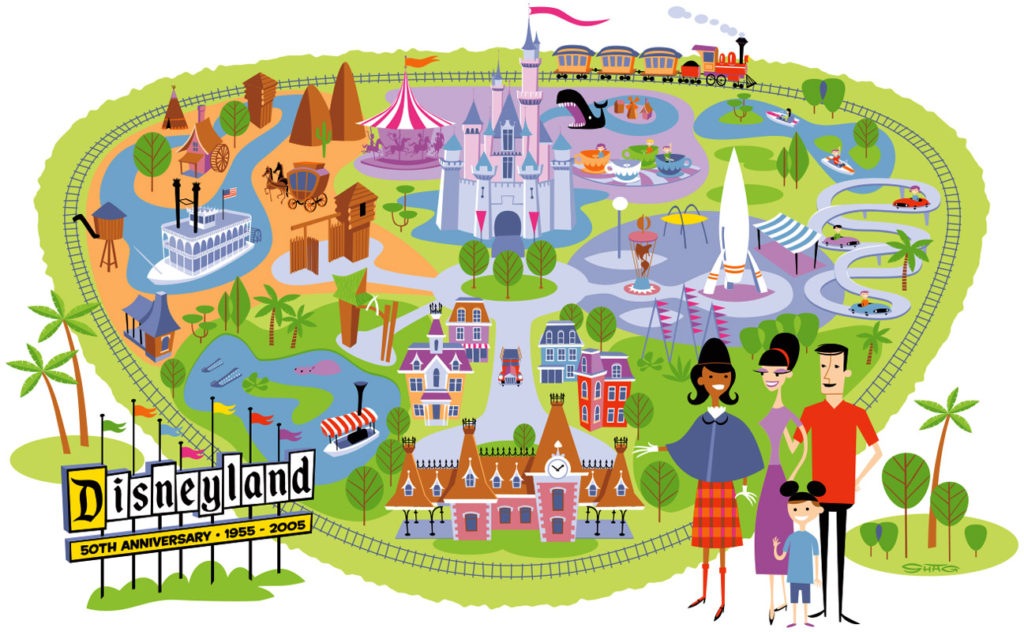
There’s a reason that this story begins in Disneyland in 1955 – because the existence of the Tiki Room relies entirely upon a very important aspect of Walt Disney’s “original Magic Kingdom”: its connection to pop culture.
Sure, today Disneyland is considered a shaper of pop culture, but what’s easy to forget is that the park was actually shaped by pop culture, too. Its five themed lands weren’t chosen at random; they were the prevailing pop culture genres of the time! Those lands of futurism, fantasy, frontier, adventure, and nostalgia were designed to align with the collective consciousness of mid-century Americana.
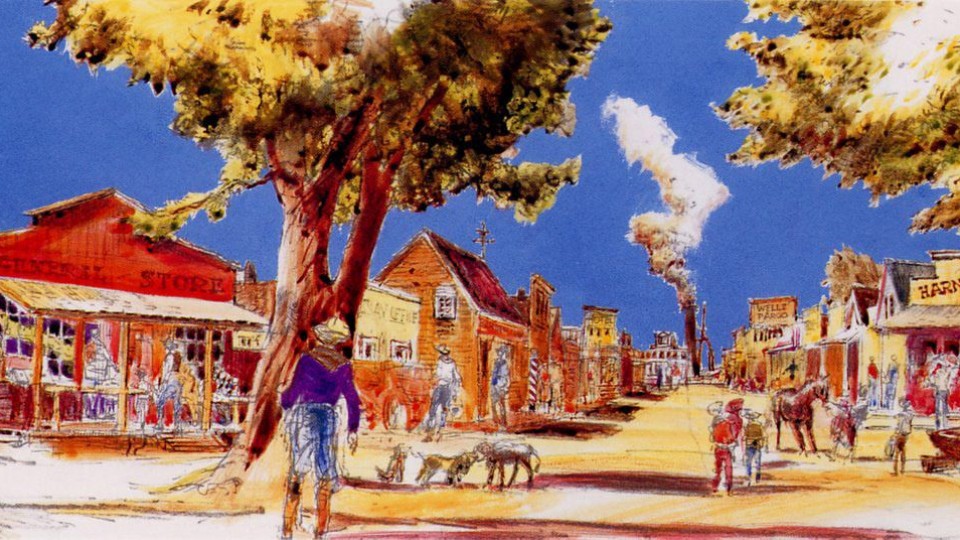
Take Frontierland. At the time of Disneyland’s opening, Americans were practically obsessed with the Old West. Kids spent summer days playing “Cowboys and Indians” outside, returning home to watch The Lone Ranger, Howdy Doody, and Davy Crockett on living room televisions. The “wild frontier” was a prevailing image in the minds of Americans, and the “Westward Ho!” movement had been crystalized as an idealized and proud time of American history… One passed through a lens of romanticism to build Frontierland!
(As perfect evidence of Disneyland’s reliance on pop culture, just consider what happened to Frontierland soon after… by the ’70s, the “Old West” had largely exited from pop culture in favor of the country’s new collective obsession – the Space Age – necessitating Frontierland’s evolution to keep current by way of Big Thunder Mountain and the never-built Possibilityland: Discovery Bay once planned for the site.)
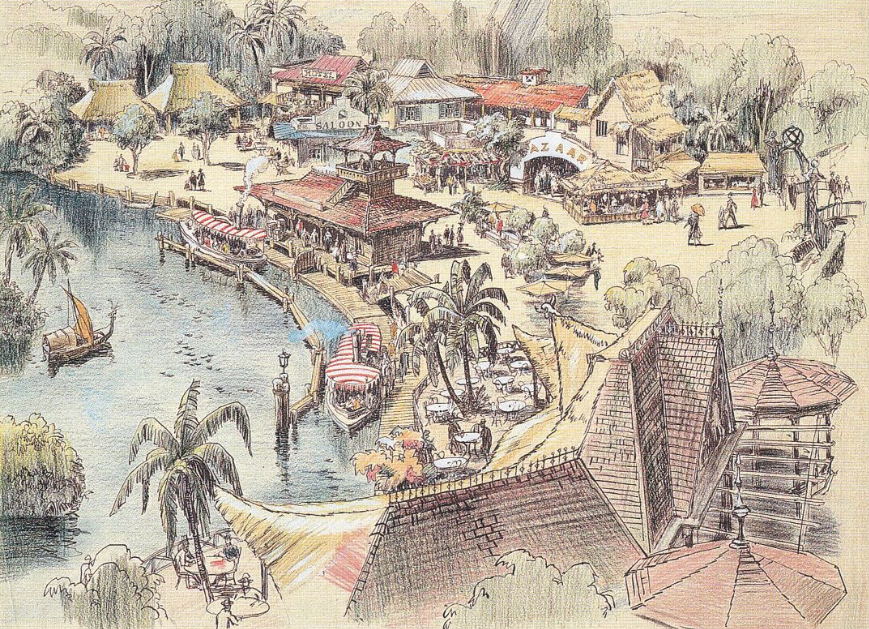
So take a look at Disneyland’s Adventureland through the same lens. In the 1950s, audiences were enamored with the “mysterious” wonders that might’ve been hiding in the misty, “undiscovered” jungles of Africa. Films like The African Queen, Congo Crossing, Disney’s own True-Life Adventure series, and the never-ending Tarzan series had shaped America’s fascination with “the dark continent.” To Disneyland’s earliest visitors, those jungles represented adventure incarnate.
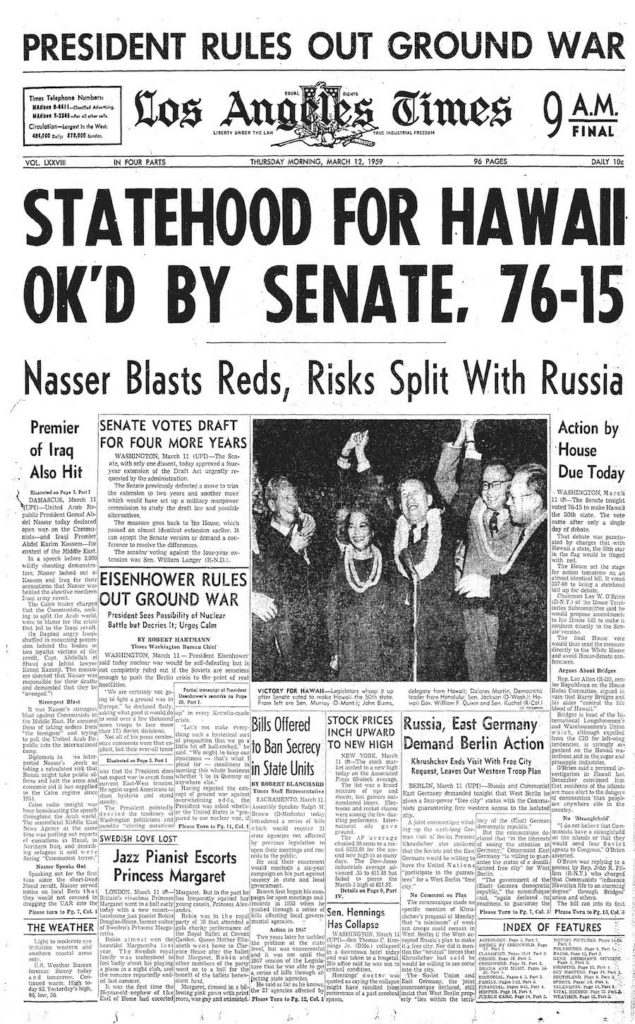
And like Frontierland, Adventureland needed to keep up. In 1959, Hawaii was admitted as the country’s 50th state. Suddenly, the “exotic” wonders of the South Pacific became all the rage as entertainment, architecture, art, and food on the mainland went Polynesian.
The ensuing “Tiki Craze” spread across the country in the ’60s as Polynesian gods, floral leis, tropical patterns, rattan furniture, rum cocktails, surfing, tiki torches, and hula skirts took center stage. People wanted a piece of paradise, and exotic Hawaii (accessible via increasingly affordable domestic airlines) made it feel attainable!
Just like that, the definition of “adventure” changed, and Adventureland needed to change with it. Disneyland’s Polynesian coup would be one of Walt’s proudest accomplishments…
Tiki takeover

When the concept of incorporating a Polynesian pavilion into Disneyland’s Adventureland was first brought to the table, it was as a restaurant. Walt objected to the idea of filling Disneyland with caged birds – or worse, dead and stuffed ones – but the team at WED Enterprises had something else in mind… something that would change Disney Parks forever.
Because, sure, Disney’s designers could create simple mechanical figures like those featured in the Jungle Cruise – able to perform repetitive motions by way of internal cogs, gears, and simple machines. But a major innovation at WED created something new.
The Enchanted Tiki Room opened in 1963 – at the height of America’s “Tiki Craze.” If you’re an Imagineering fan or a Disney Parks enthusiast, this is your moment to break off from the story and fly over to the standalone feature – Modern Marvels: The Enchanted Tiki Room – where you can dig deep into the innovations that brought the attraction’s feathered cast to life. But here’s the short version just to get you caught up…
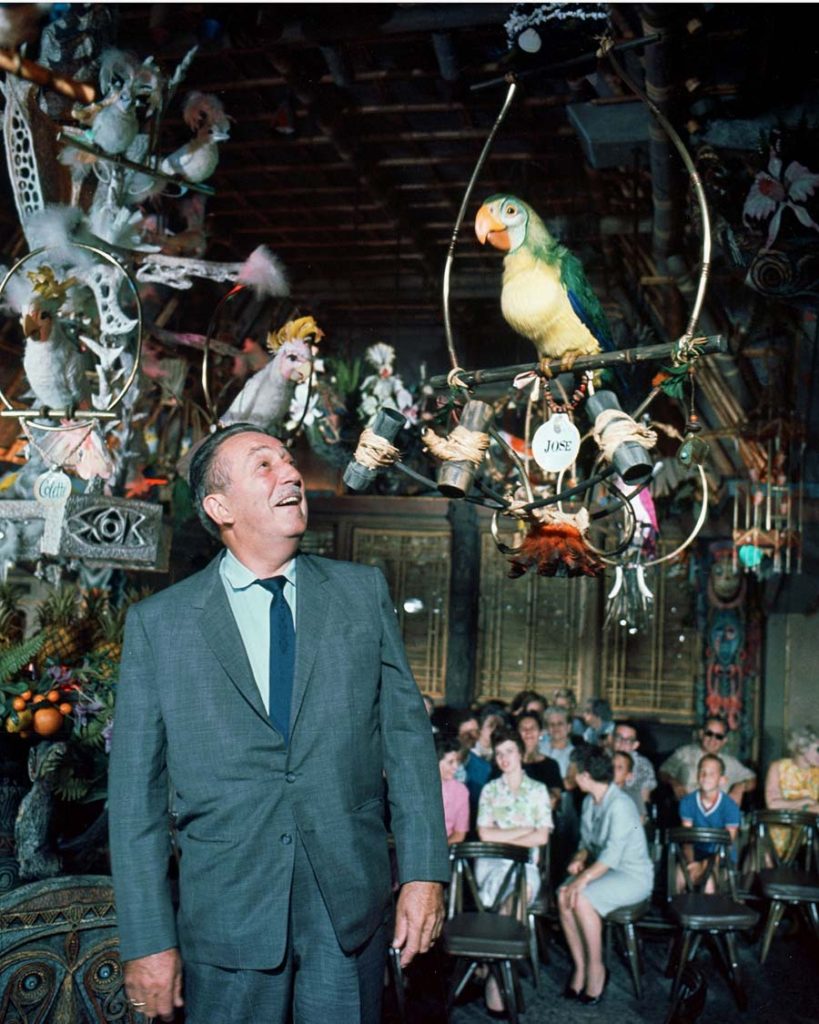
As their name implies, these new figures didn’t just look alive, they sounded it. More than just repetitive mechanical motions, each bird, plant, and Tiki totem inside the pavilion independently breathes, flaps, clips, shuffles, and dances in programmed tandem with audio. Controlled by a massive computer room buried under the attraction, each bird was powered by a “brain” of magnetic tape, triggering sounds and opening and closing pneumatic pistons that powered wings, beaks, eyes, and chests.
So advanced and unthinkable was this Audio-Animatronic technology to audiences of the 1960s that a single “barker bird” positioned outside the Tiki Room stopped guests in their tracks. Indeed, so many guests crowded around the seemingly “brilliant” bird, massive groups blocked Adventureland’s entrance day and night, entranced by the impossible figure. It wasn’t long before the barker bird was removed simply to unclog the path at Adventureland’s entrance!
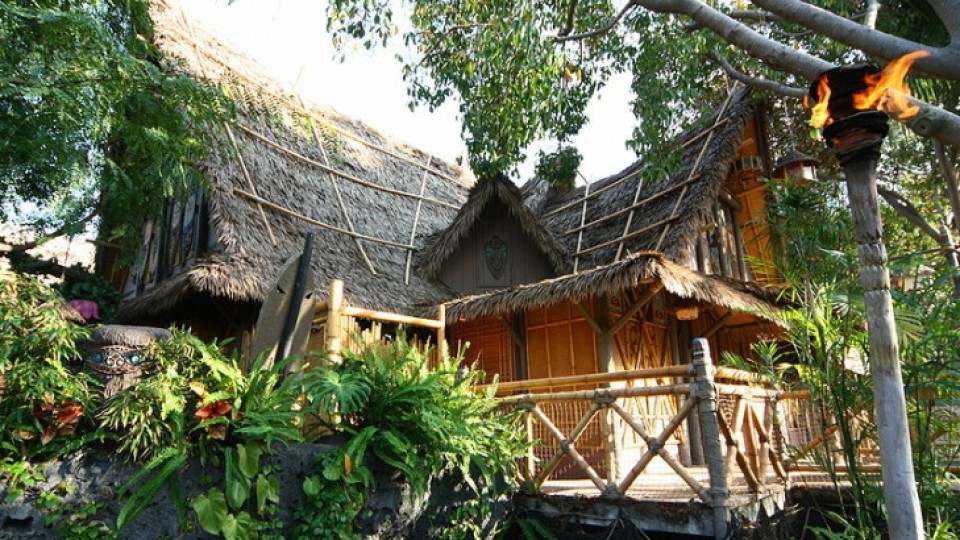
More than fifty years later, the groundbreaking choir of creatures in Disneyland’s Enchanted Tiki Room is spectacular enough to make our must-read countdown of the Best Animatronics on Earth. To this day, Disneyland’s feathered figures perform in perfect harmony, leaving young-at-heart guests with the distinct and unshakable impression that they’ve seen truly magical (or at least very well-trained) living birds. And that made it a shoe-in for inclusion in the new Magic Kingdom…
Flying south
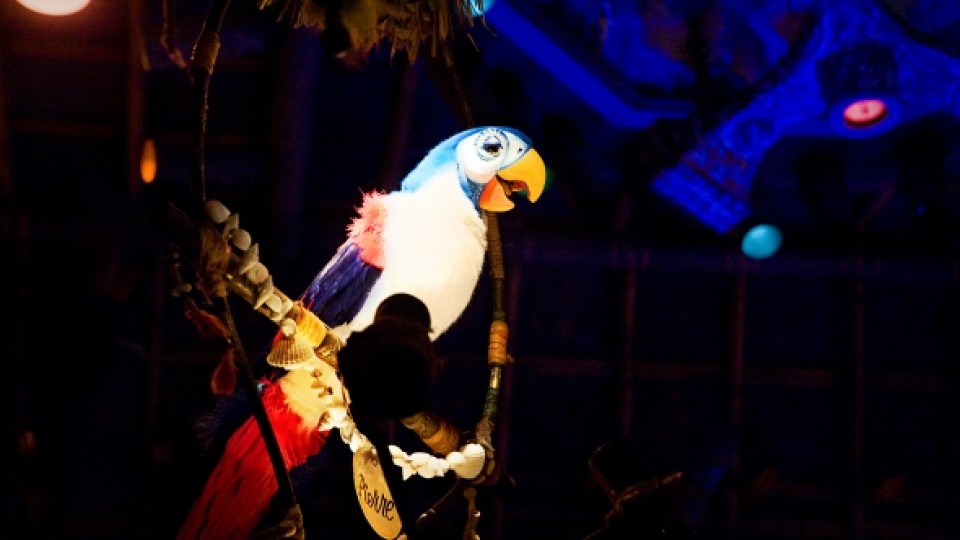
The Enchanted Tiki Room was a bona fide hit and, like so many of the original ideas imagined by Walt and his cast in the early years, it was evergreen. Like Pirates of the Caribbean, Haunted Mansion, or Carousel of Progress, the Enchanted Tiki Room would stand the test of time and remain an invaluable piece of Disneyland; the kind of storied, unshakable, good-hearted family aside that sets Disney Parks apart.
While its sing-along-friendly songs (like “Let’s All Sing Like the Birdies Sing”) were a blast, there’s no forgetting the show’s headlining hit: “The Tiki Tiki Tiki Room.” Written by the venerated Sherman Brothers (the duo responsible for… well… just about every Disney Parks hit you can imagine from “it’s a small world” and “World of Color” to “There’s a Great Big Beautiful Tomorrow” and the “One Little Spark” headliner that featured in another Lost Legend: Journey into Imagination. The two even wrote Mary Poppins’ “Supercalifragilisticexpialidocious”!), the infectious and joyful “Tiki Room” is easily one of the strongest in the Disney Parks songbook and a sing-along masterpiece.
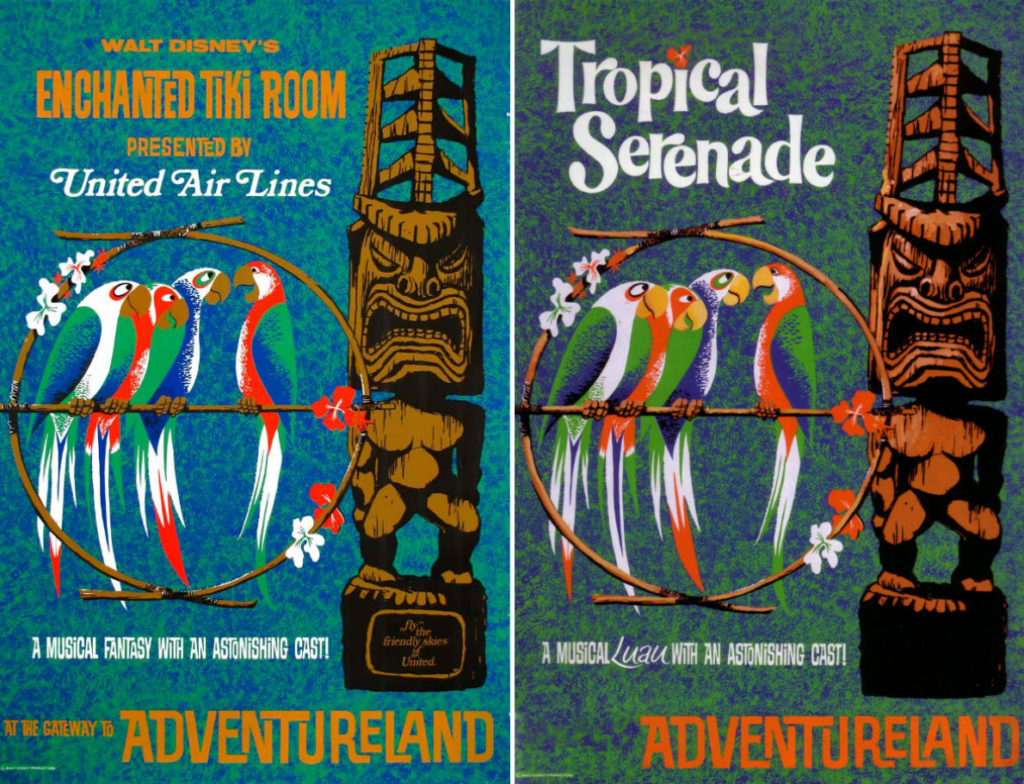
Of course, when Imagineers set to work designing Disneyland’s younger sister to be built in Florida, it was obvious that the enchanted chorus of the Tiki Room would have a place of honor in a ready-made, grand theatre. Opening alongside Magic Kingdom on October 1, 1971, the transplanted copy of the attraction was called Tropical Serenade – a fitting way to describe the leisurely, relaxing, and magical show that awaited within.
Like most attractions duplicated from Disneyland to the larger, grander, master-planned Magic Kingdom, the transplanted Tiki Birds in their new Tropical Serenade would take on a larger-than-life presence. The towering Sunshine Pavilion would rise above the jungles of this larger Adventureland as the land’s “weenie” – the visual landmark to draw guests in from Magic Kingdom’s hub.
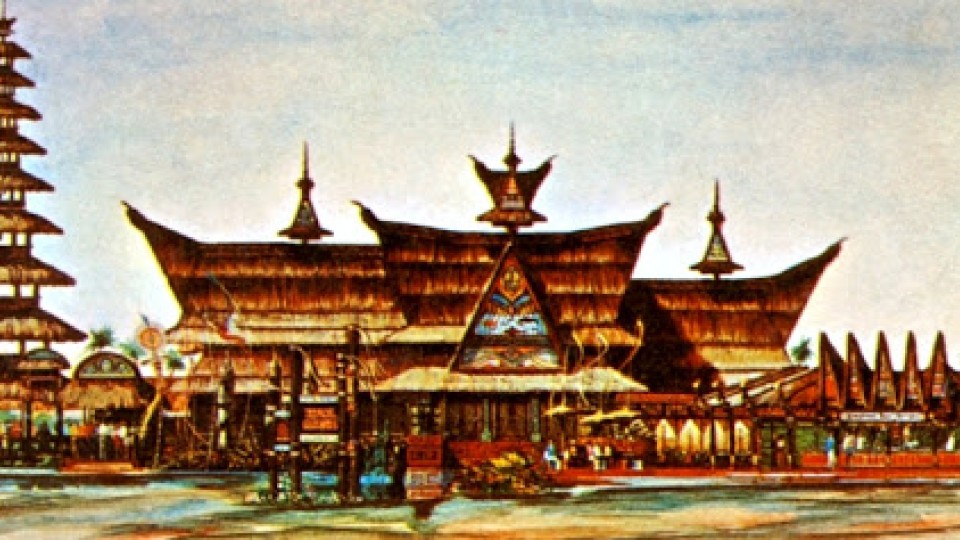
Disneyland’s version had guests queue in an enchanted volcanic grotto where magical tiki totems of Polynesian gods told their tales. Magic Kingdom’s was a bit different, featuring two comical birds revealed from behind a waterfall, explaining how they’d found the Sunshine Pavilion while escaping from some hungry Jungle Cruise predators. Then, guests would be ushered inward where an exact copy of the Disneyland original would delight young and old in simple, sing-along wonder.
A beautiful work of Imagineering and a living testament to Walt Disney’s imagination and the inventiveness of his original Imagineers, both Disneyland’s 1963 Enchanted Tiki Room and Magic Kingdom’s identical 1971 Tropical Serenade stood among Disney’s best ever classic attractions. So how and why would Disney do something to turn a revered Walt original into a disaster? What happens next may be too painful for Disney Parks fans to relive… Read on…


